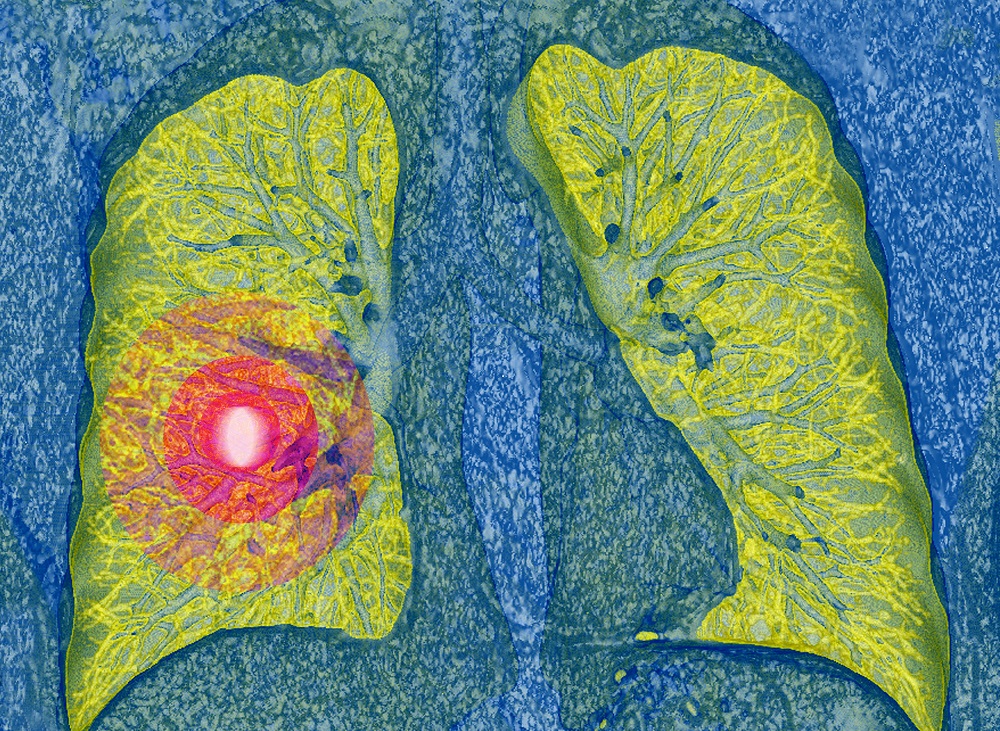COVID-19 has had a large impact on the stress levels of many Americans. According to the US Centers for Disease Control and Prevention (CDC), infectious disease outbreak-based stress can potentially cause worsening mental health conditions, increased substance use, and fear about one’s health and medical conditions,¹ particularly those such as lung cancer that require treatment. What can clinicians do to help lower distress levels?
A recent study published in The Journal for Nurse Practitioners examined patients who were screened for levels of distress while undergoing lung cancer treatment or surveillance between April and June 2020.² The researchers found that a majority of participants required intervention to help alleviate their anxiety.
The 441 patients who underwent screening at the Stony Brook Cancer Center were asked a series of questions about distress levels related specifically to COVID-19. Their distress was measured on a scale from 0 to 10 using the National Comprehensive Cancer Network’s Distress Thermometer; 207 participants (47%) scored between 3 and 5, which led to counseling from an in-house nurse practitioner (NP); 142 patients (32%) scored between 6 and 9, which necessitated referral to a social worker; and 21% of participants scored low enough to not require added intervention.
As this research finds that many patients are distressed enough to require some form of intervention, a number of stress-reduction techniques are provided that can be easily put into practice.
- Reach out to patients
The most common reasons given for distress include fear of delayed testing and the isolating changes COVID-19 causes to lifestyle. Patients who scored 3 to 6 were contacted by telephone by an NP who was already familiar with them and who spent 15 to 45 minutes discussing their anxieties and educating them on precautions. Reaching out to patients may help target their feelings of isolation and their fears of being unprepared for COVID-19.
- Encourage remote interactions
On their calls with patients, the NP would frequently encourage them to have remote interactions with their closest social support, including family, friends, and religious affiliations. In addition to encouraging these interactions, which may help alleviate loneliness, NPs also can make patients aware of remote support groups for both lung cancer and COVID-19.
- Tend to provider stress levels
The CDC has warned that healthcare personnel may experience distress and burnout during COVID-19, which can lead to feeling overwhelmed and helpless.³ Implementing effective coping strategies can encourage clinicians to be in a better position to help your patients with their own distress.
References
- Mental health and coping during COVID-19. Centers for Disease Control and Prevention website. https://www.cdc.gov/coronavirus/2019-ncov/daily-life-coping/managing-stress-anxiety.html. Reviewed July 1, 2020. Accessed December 8, 2020.
- Albano D, Feraca M, Nemesure B. An assessment of distress levels of patients undergoing lung cancer treatment and surveillance during the COVID-19 pandemic. J Nurse Pract. Published November 21, 2020. doi:10.1016/j.nurpra.2020.10.020
- Healthcare personnel and first responders: how to cope with stress and build resilience during the COVID-19 pandemic. Centers for Disease Control and Prevention website. https://www.cdc.gov/coronavirus/2019-ncov/hcp/mental-health-healthcare.html. Updated May 5, 2020. Accessed December 8, 2020.
This article originally appeared on Cancer Therapy Advisor
